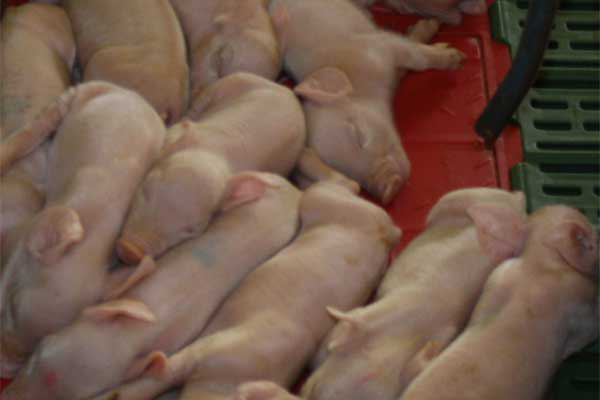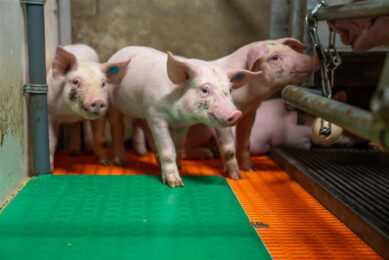BPEX: How to improve piglet quality

Pig nutritionists need to help producers improve piglet quality in order to wean more pigs from larger litters born, while geneticists look after piglet quantity. This was the view of Professor Sandra Edwards at the BPEX Innovation Conference, speaking about sow nutrition.
Sandra highlighted a number of ways to improve piglet quality by the way we feed sows, from weaning right through to the end of pregnancy.
“Fermentable diets, including dextrose or lactose, have been found to produce more mature eggs, higher birthweights, lower birthweight variability and lower mortality,” she said.
“We need to feed sows to improve the quality of the placenta and thus the number of embryos implanted. Poorer quality placentas with poorer nutrient supply to the piglets are also linked to stillborns, which have been found to be longer and thinner.”
“Arginine and glutamine supplementation can help increase placental quality, which reduces birthweight variation as well as the number of piglets less than 1.1kg.
“Essential fatty acid, DHA, fed in the last month of pregnancy can help reduce stillbirths despite sows having a longer farrowing duration.”
Piglet vitality immediately after birth is also important; it is not just about birthweight. Early suckling for colostrum intake is important to wean a strong litter.
“Also, I think the pig industry should look into transition diets to ensure sows can produce the colostrum and milk needed to rear larger litters,” Sandra said. “We need to talk to our dairy industry colleagues about this.”
Around 180 people attended the conference, both pig producers and allied industry members, for a packed programme of presentations from UK and international experts on: ‘pig buildings of the future’ and ‘Breed+3 – how to wean three more piglets per sow per year’.
To view the video of Sandra’s presentation and those of the other speakers, click here.











